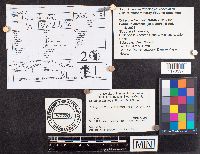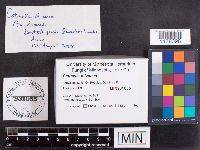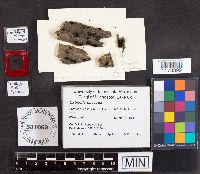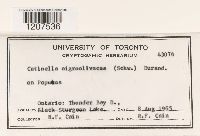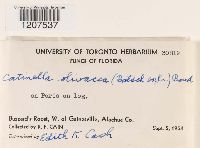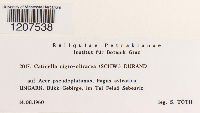University of Minnesota
http://www.umn.edu/
612-625-5000
http://www.umn.edu/
612-625-5000
Minnesota Biodiversity Atlas
Bell Museum
Dataset: MIN-Fungi
Taxa: Catinella
Search Criteria: excluding cultivated/captive occurrences
1
Page 1, records 1-6 of 6
Bell Museum fungi | |
MIN:Fungi | Catinella olivacea (Batsch) Boud. 877207[1178397]Leacock, P.R. NAMA 2001-1612001-07-07 United States, Minnesota, Stearns, Collegeville, 45.597803 -94.364153 |
MIN:Fungi | Catinella olivacea (Batsch) Boud. 931055[1178398]D.P. Mahoney s.n.2008-08-17 United States, Minnesota, Lake, Snowbank Lake, Dorothy's Path |
MIN:Fungi | Catinella olivacea (Batsch) Boud. 931063[1178399]D.P. Mahoney s.n.2011-08-06 United States, Minnesota, Lake, Snowbank Lake, Dorothy's Path |
MIN:Fungi | Catinella nigroolivacea (Schwein.) E.J. Durand 615427[1207536]Cain, R.F. 430761965-08-08 Canada, Ontario, Thunder Bay, Black Stergeon Lake |
MIN:Fungi | Catinella olivacea (Batsch) Boud. 615214[1207537]Cain, R.F. 308191954-09-05 United States, Florida, Buzzard's Roost, W. of Gainsville, Alachua Co. |
MIN:Fungi | Catinella nigro-olivacea (Schwein.) E.J. Durand 818724[1207538]Toth, S. 20171960-08-14 Hungary, Bukk-Gebirge |
1
Page 1, records 1-6 of 6
Google Map
Google Maps is a web mapping service provided by Google that features a map that users can pan (by dragging the mouse) and zoom (by using the mouse wheel). Collection points are displayed as colored markers that when clicked on, displays the full information for that collection. When multiple species are queried (separated by semi-colons), different colored markers denote each individual species.
